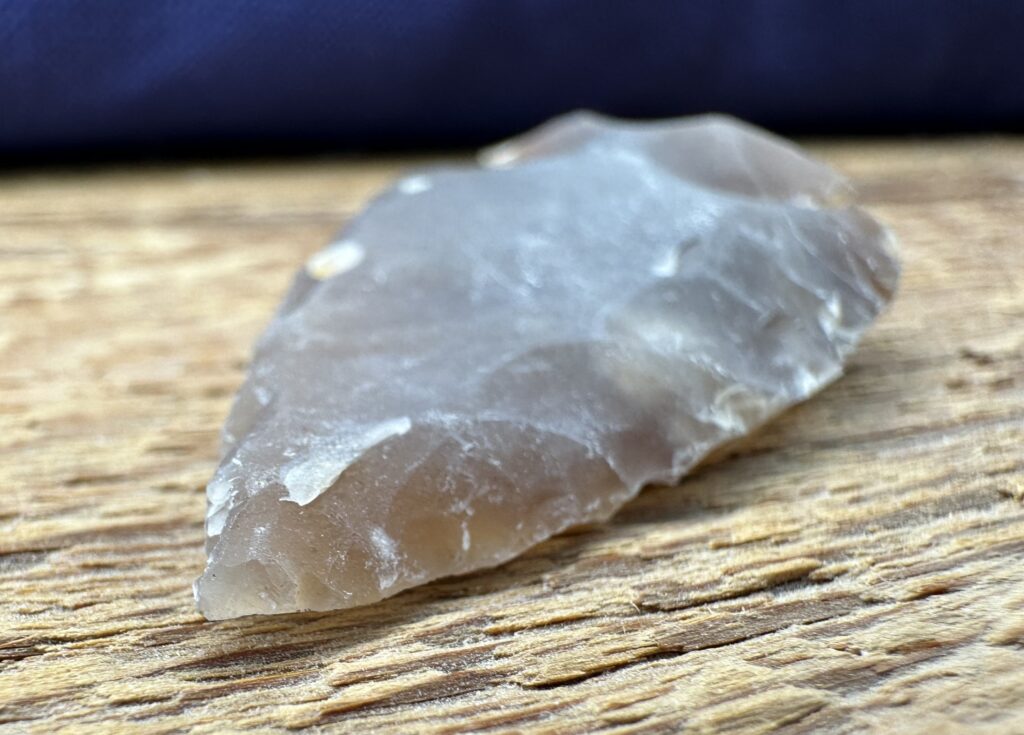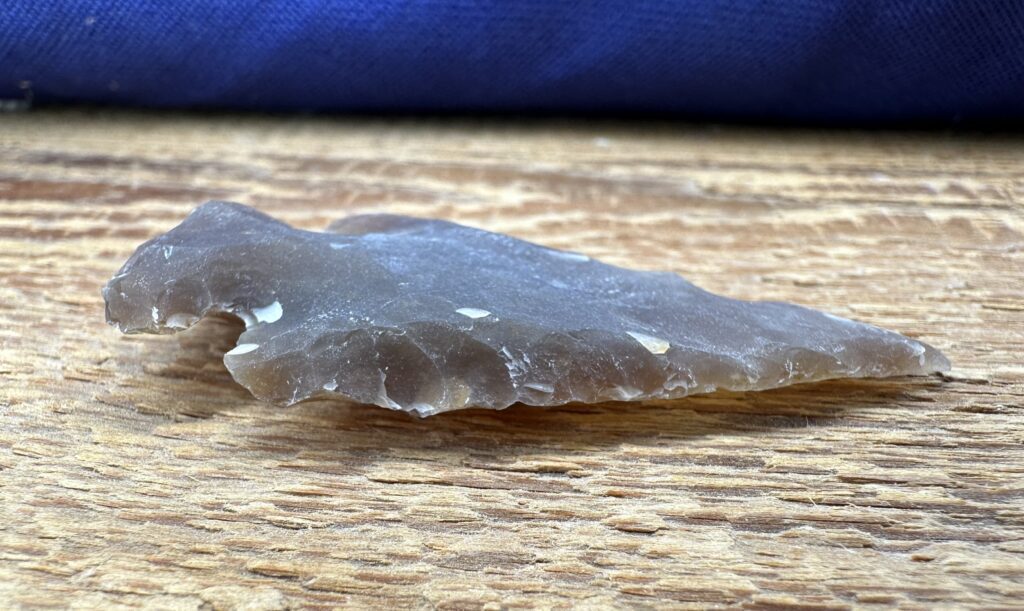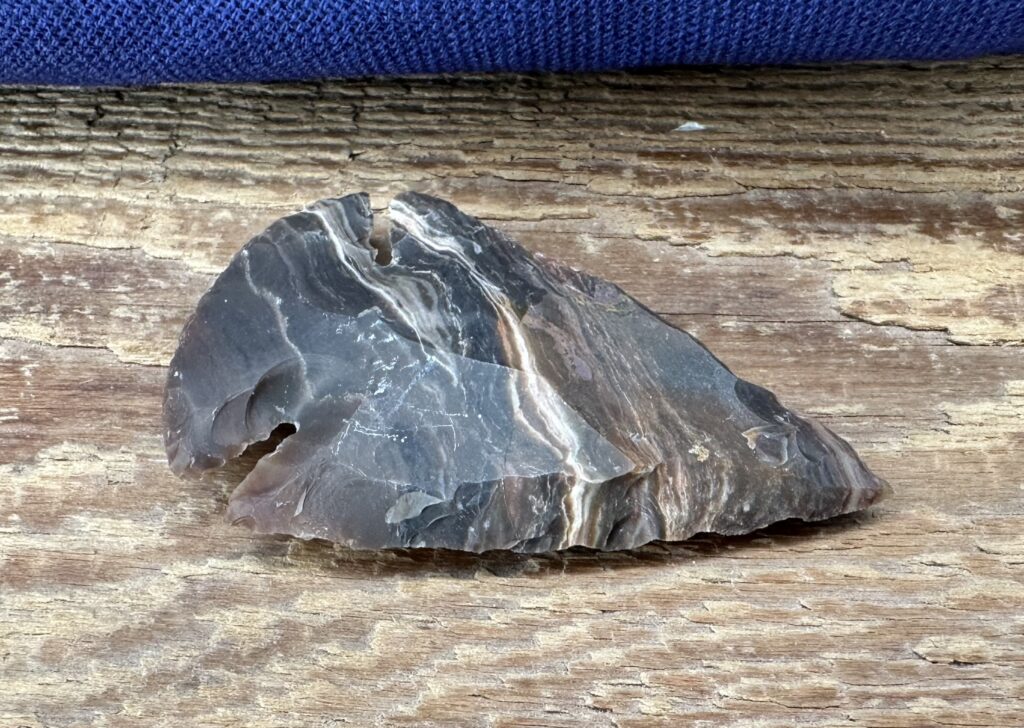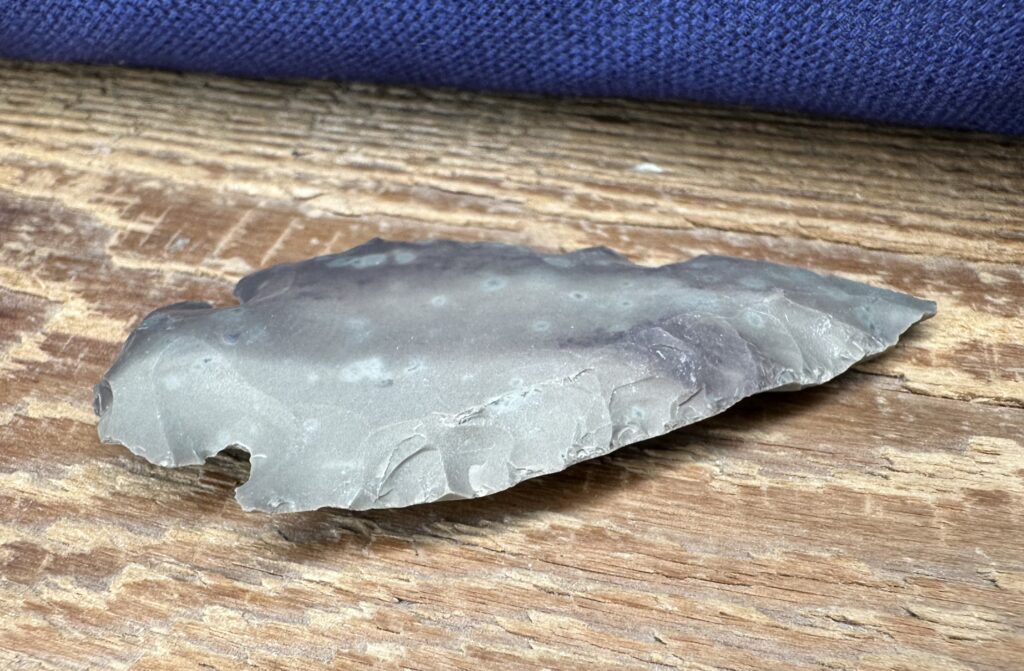Rare arrowheads are fascinating artifacts that tick all the collectible boxes. Historical, varied, hidden, and with the most fantastic backstories imaginable.
Technically, arrowheads are only a small subsection of what are known as projectile points, which refers to all pointed triangular tools. These were often stone tools but could also be shell, metal, animal bone, or glass.
Generally, arrowheads refer to all triangular pointed projectiles, and for our purposes, we’ll be referring to this broad category as such. Another arrowhead hunting term you might hear is biface, which describes a stone tool sculpted on two sides to form a point, knife blade, or spear.

Three Categories of Arrowhead Points
The three broad categories of projectile points include dart points, spear points, and arrowhead points. Axe head points are more prominent, and since they’re used as more than projectiles, they’re often not included in this category.
The different functions of the points determine the shape, size, weight, material, and design of the point. So there are hundreds of variations and types of arrowheads.
Some have sharp edges, others have blunt edges, and there are variations in the shape of the point base too. Also, consider the function of the arrowheads, which varied extensively.
Smaller arrowheads were attached to arrows for weapons and shot with a bow, while larger arrowheads were fixed to a spear shaft.
With a process called hafting, the finished arrowhead is fixed to the end of a spear with twine.
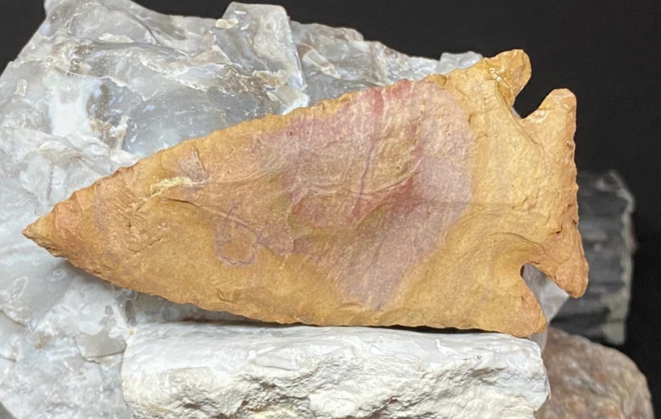
Rare Arrowheads by Time-Period
There’s a big difference in arrowheads depending on the period. For example, prehistoric points from the stone age look very different from Indian arrowheads found at camp points in North America used by Native Americans.
There is a massive interest in arrowheads, particularly in the United States, and amateur archaeologists looking for stone artifacts, historians, and general enthusiasts are regularly looking for the rarest arrowheads.
Rare arrowheads are quite often the most expensive arrowheads too, but this isn’t always the case, as you’ll see shortly.

Paleo Indian Period, 10,000 – 14,000 Years Ago
Stone points have been found in North America dating back to the prehistory era of 11,000 BCE at the Russell Cave National Monument site in Alabama.
Russell Cave has been the source of projectile points from the Paleoindian people, the first known group in North America. But many more arrow points are found from three other archeological stages.
Archaic Stage, 7,000 to 5,000 BC
Woodland Stage, 500 BC to 1,000 AD
Mississippian Stage, 1,000 to 1,600 AD
Rare Arrowhead Hunting for Archeologists and Amateurs
If you’re reading this, you’re either a well-established enthusiast or somebody interested in discovering more about this fascinating hobby. Beginning an Arrowhead collection can be an educational and rewarding endeavor.
We’ll be looking at how to identify rare arrowheads and the best places to find lithic artifacts.
Intriguing artifacts with extraordinary historical significance and some of the most beautiful natural environments in the world.
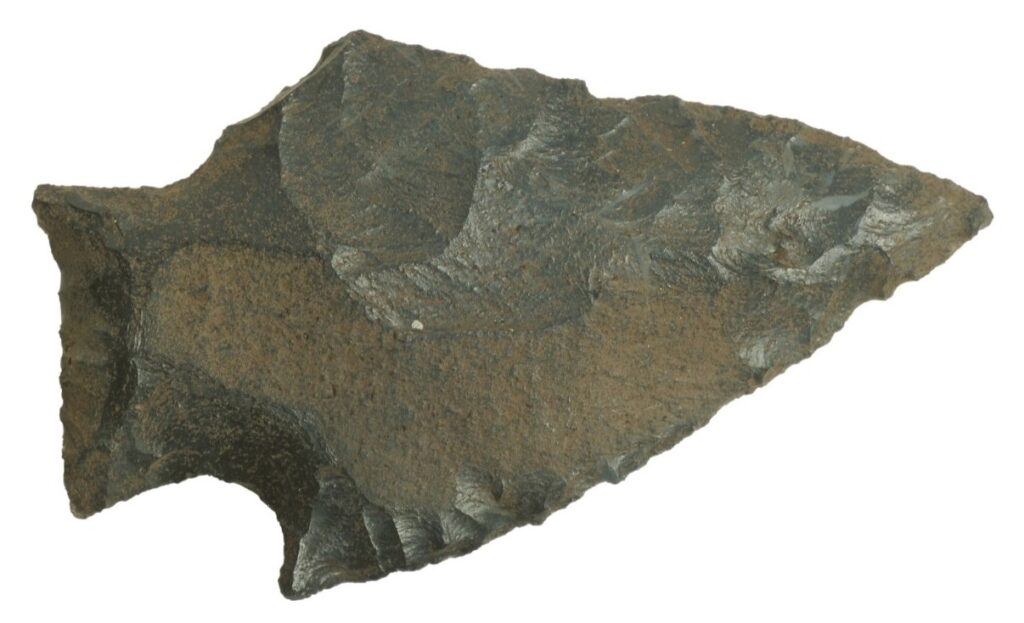
Rare And Valuable Arrowheads
The value of an arrowhead is dependent on several factors: rarity, era, condition, material, and the particular tribe.
Rarity
Rarity is an important factor, but as mentioned earlier, it is not a direct indicator of high value. That’s because rarity can mean a few different things.
Arrowheads and spearheads with a unique shape or look may seem to be valuable, but there is an abundance of certain types of arrowheads. Points of abnormally large sizes, or made with rare stones, quartzite, or gemstones can increase the value significantly.
Arrowhead Era
The age of the arrowhead dramatically influences its value. Prehistoric arrowheads go for massive amounts of money at auctions and private sales.
It is a general rule of thumb that the older the arrowhead, the more value it has.
Again, this is not carved in stone, and there are exceptions when other criteria, such as tribe, are considered.
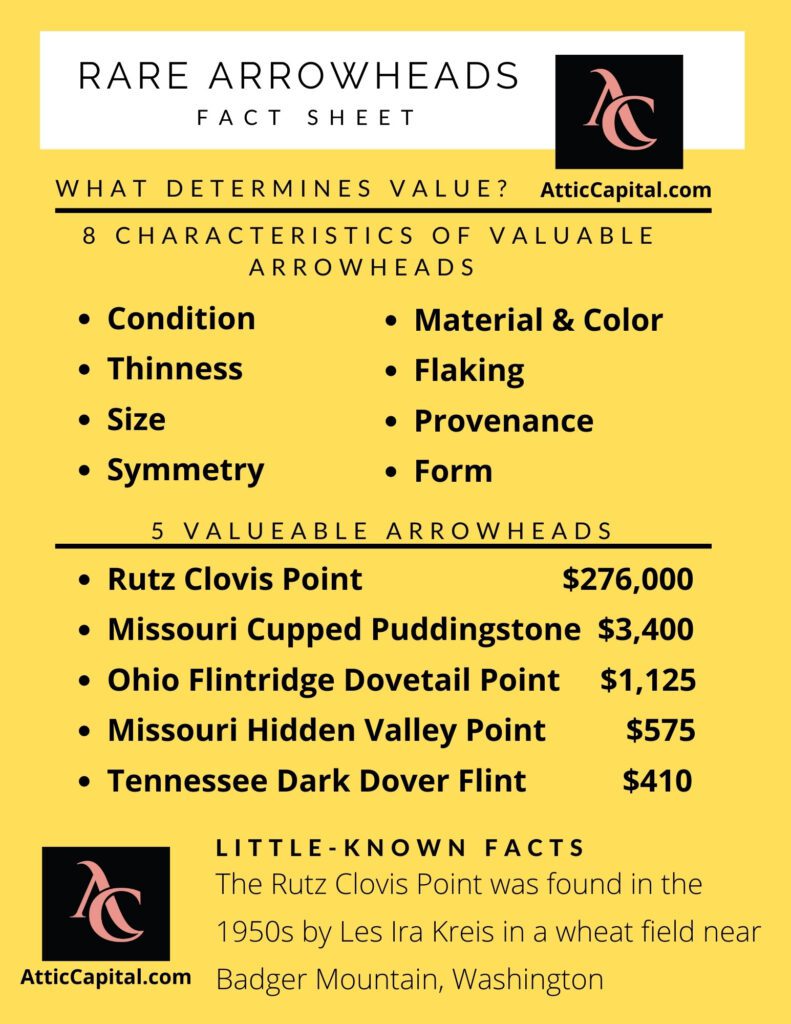
Arrowhead Condition
As with all collectibles, condition plays a part too. Since arrowheads were used in combat and hunting, they are often damaged and incomplete.
With flint knapping, large stones are broken apart, and the small chips are used as arrowheadss.
Flint chips and flint flakes are found all over ancient Indian camps, and it isn’t always easy to find perfectly intact points. Intricate details on the arrowhead can give clues to how much attention was given when the point was knapped, making it much more valuable.
Collectors most often want to display their artifacts. Admiring the original shape and structure of the typical arrowhead is a large part of the appeal, hence value is determined by condition.
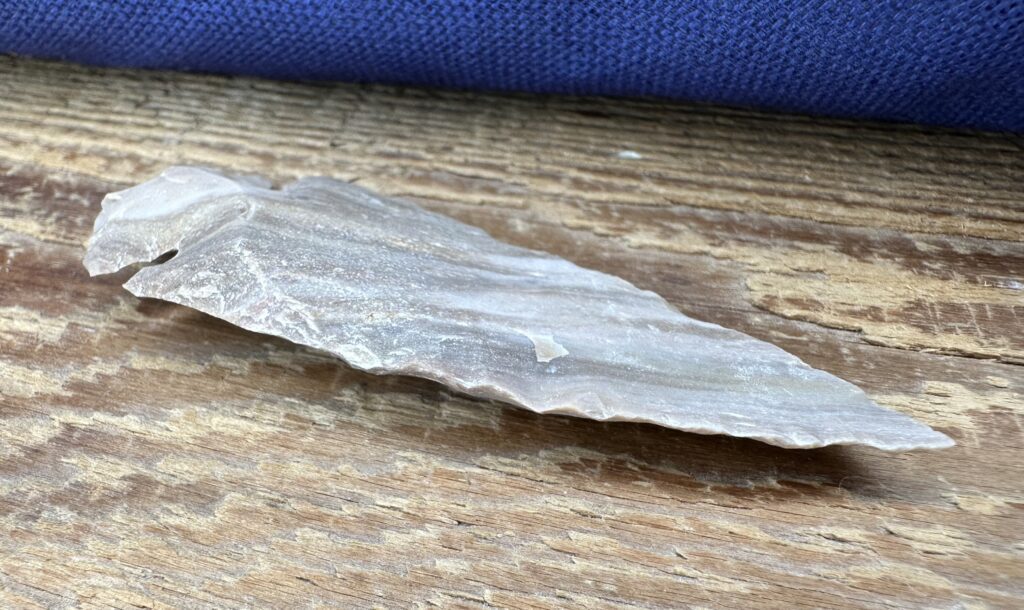
Material
Another factor is the arrowhead material. Arrowheads made from rare materials such as jade, petrified wood, quartzite, and green sea obsidian will always be more valuable than plain old flint points.
The materials used are most often linked to the tribal source, which determines value. For example, atlatl arrowhead points were used as darts and were carved from deer antlers.
Tribe
The value of the arrowhead links to the tribe that made it. Again, this is related to the era the tribe existed in and the materials used.
One of the best examples is the massive interest in Clovis arrowheads, which came from the Clovis people, a prehistoric Paleoamerican culture.
They are believed to be the ancestors of indigenous Americans and existed over 13,000 years ago, and were named for their unique points and artifacts.

The Most Valuable Arrowheads
One of the most expensive and valuable arrowheads ever sold was a prehistoric Clovis point made of rare sea-green obsidian stone.
The Rutz Clovis point was found in the 1950s by Les Ira Kreis in a wheat field on Badger Mountain in Washington.
The arrowhead is just over 9 inches long, and it’s the largest of its kind ever discovered. In 2013, the Rutz Clovis point was sold at Morphy Auctions for $276,000.
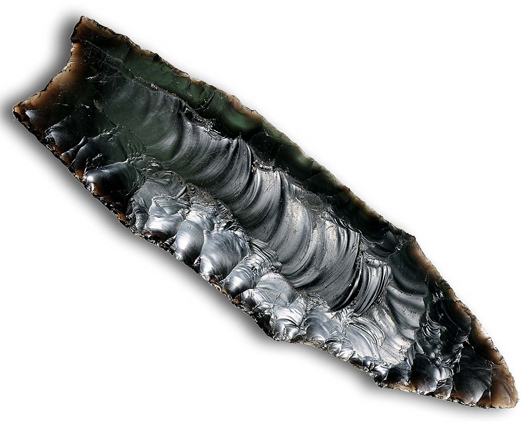
Clovis points are by far the most sought-after arrowheads. The most expensive arrowhead ever sold was a prehistoric Clovis point made from green sea obsidian.
It sold for a staggering amount based on its rarity, the material, and of course, its near-perfect condition. It was also a particularly large artifact, which adds to the value.
Clovis Points
The larger arrowhead point is usually more damaged and chipped than the smaller points, so finding a large one in near-perfect condition is rare.
This arrowhead was a collector’s holy grail, but Clovis points are generally valuable and regularly get sold for tens of thousands of dollars.
Even though archaeologists have discovered older tools, Clovis points remain the most valuable, and that’s probably because of the following factors.
Narrow Timeline
The Clovis culture didn’t stick around for very long, and there was a relatively narrow timeline during which they made their unique and creative points.
Only around 10,000 Clovis points exist due to this factor, making them a collector’s dream. These 10,000 points are scattered throughout 1500 Clovis site areas in North America.
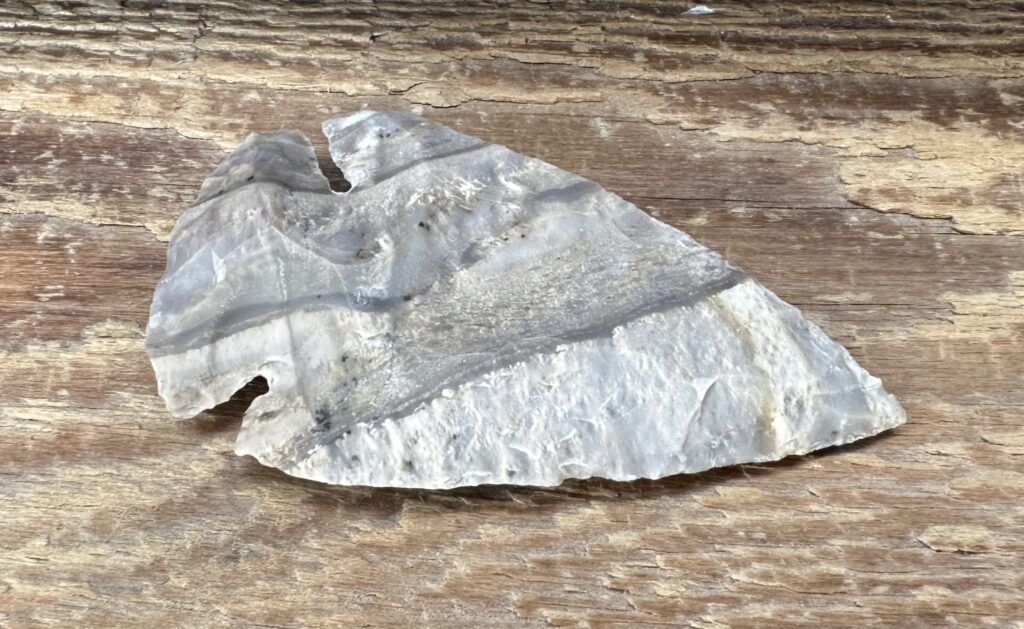
Distinctive And Beautiful Native American Arrowheads
Native American Indian points and arrowheads are known for their shape, look, and feel are unique, a significant reason for their high value. The tips are lance-shaped, and they quite often have incredibly well-made sharp edges.
They have flutes, and shallow and concave grooves that extend from the base of the point to the tip. These are believed to have aided the point insertion into the sphere shaft.
They’re about 4 inches long, a third of an inch thick, and have an exceptionally sleek and lithe design.
They are stunning compared to most other arrowheads, and as mentioned, display-case aesthetics also play a part in value.
Clovis Rare Arrowheads Material
For the era, the Clovis people were breathtakingly fine crafters of tools. Clovis points are also valuable due to the materials used to create them – Jasper, chert, obsidian, and a wide array of other fine and brittle stone types.
As mentioned, Clovis points might be the most valuable, but they aren’t the oldest.
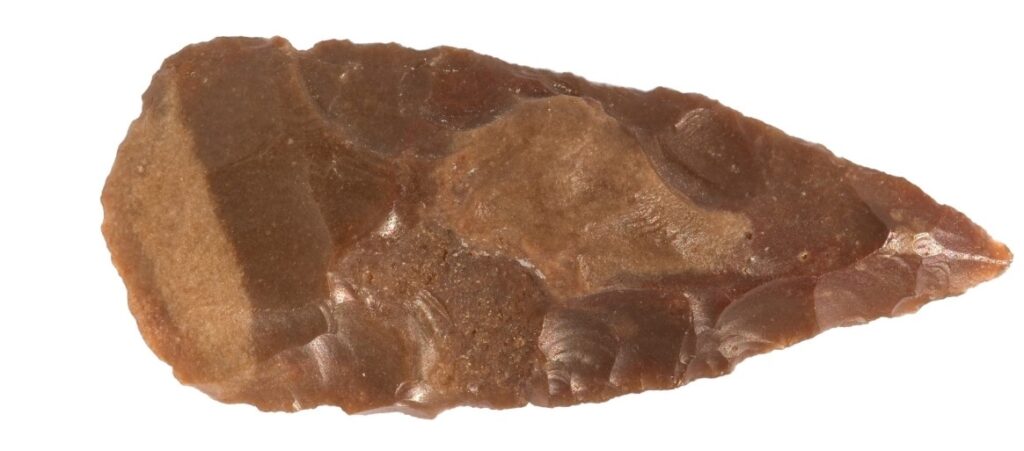
Pre-Clovis Archaeological Sites
The following are pre-Clovis sites where some ancient points have been discovered.
Bluefish Caves
Tools, pendants, and points up to 24,000 years old were discovered in The Bluefish Caves in Yukon, Canada. They resemble prehistoric Siberian tools, indicating that early settlers most likely made them.
Monte Verde (Chile)
This was the first pre-Clovis archaeological site accepted without debate or argument. Before this, no one knew that there were settlers as far South as Chile over 15,000 years ago.
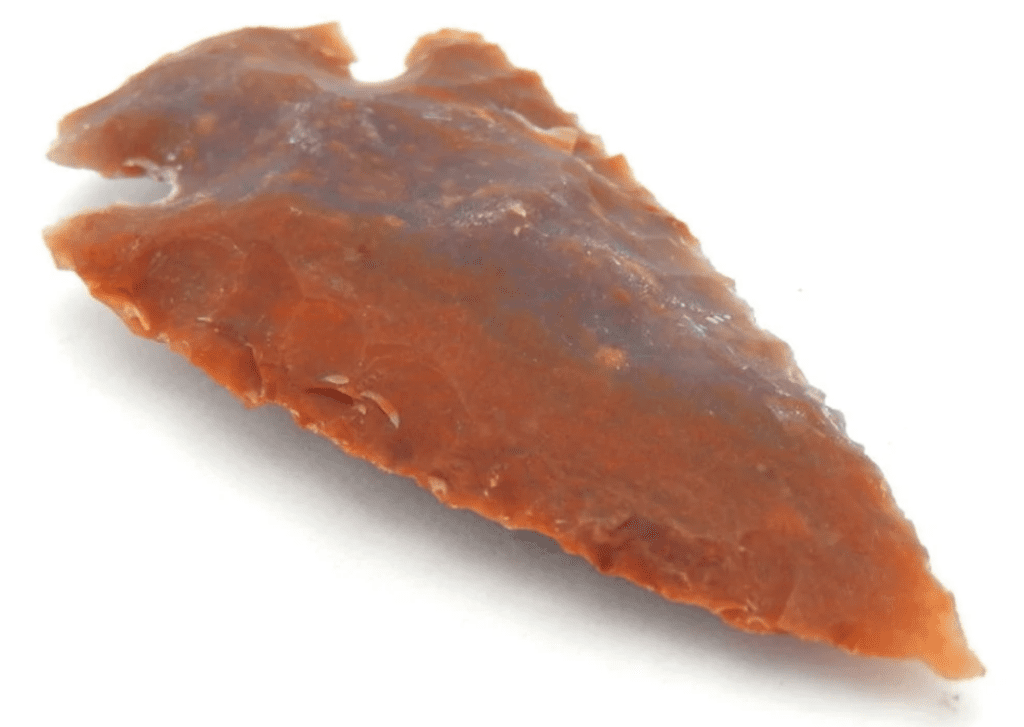
Meadowcraft Rockshelter
This site in Pennsylvania, USA, was one of the first pre-Clovis sites to be discovered, and points and tools that differed vastly from Clovis variations are abundant.
These tools are over 14,000 years old, and based on the design, the tribe used unique technology to create them.
Clovis points might be the most valuable, but there are other valuable points that collectors and enthusiasts must be aware of.
Folsom Points
Folsom agate points are highly valuable point that dates between 9,500 – 8,000 BC. They have extensive grooves on both sides and were used for hunting mammoths and giant sloths.

Dalton Points
The Dalton point was used between 10,500 and 8,500 BC. They are fish-shaped, with inward curves at the base and an outward curve in the middle.
Plano Points
Plano points were made a little later in the prehistoric period and were also more brittle and less effective than other points. Some are believed to have been decorative and not used in hunting or fighting.
There are hundreds of other points, but generally, the later the period, the less value.
Archaic period points made between 7,000 and 1,000 BC are less valuable than prehistoric points. Those less than 3,000 years old generally have the most negligible value unless made from unusual materials.
Woodland Points
The early Woodland period included the Hopewell and Adena cultures dating back 3,000 – 1,400 years B.P. (before present time) They were the first to make pottery and built mounds and enclosures dug into the earth.
Spear points from Woodland periods were either contracting, where the stem tapers toward the base, or straight points, where the stem is mostly parallel.
Finding Rare Arrowheads
Unless you’re a collector that does their arrowhead searching online, getting out into the great outdoors to find arrowheads is a very exciting option.
Here are some tips to get started and become a successful arrowhead hunter!
Do Your Research
Hunting arrowheads requires comprehensive background research. First, you need to find out where the tribes were, their movements, and where they hunted.
There is excellent information online and some fantastic books that go into full detail regarding this, and it is strongly suggested that you begin here.
Consider The Changing Environment
Much of geography is completely different than it appears today.
Again, some convenient resources can show you what environments looked like during these periods. You need to check this out before you begin your journey.
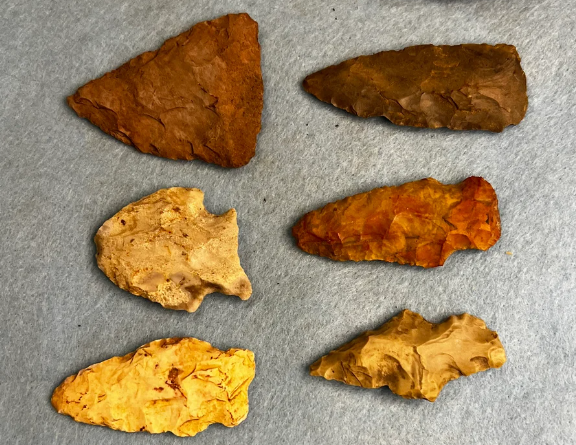
Know Where To Look For Rare Arrowheads
When you’re out on the hunt, you need to understand what you are looking for – The arrowheads won’t just appear!
Water
Starting in creeks, streams, and muddy soil near river areas is always a great place to begin your search for rare arrowheads. The Mississippi and Missouri River banks have been a source of amazing rare arrowheads and ancient artifacts in the southern region of the United States.
Settlements were almost always near water sources, and the changes in geography and the elements often mean that arrowheads are scattered in these types of environments.

The best time to embark on these searches is when the water is at its lowest, so the middle of summer is ideal. Rare arrowhead hunting after a good rain will make them much easier to see.
The points will most likely be right at the bottom of river beds and creeks, so be prepared to get a little wet in your pursuit!

Rocks
Many arrowheads can also be found trapped in rocks found in and near rivers and creeks. They become lodged and can easily be removed with the right tools.
The deeper the rocks, the more likely you’ll find an arrowhead. The visible ones have usually all been discovered as this unique hobby becomes more popular!
Where to Buy and Sell Rare Arrowheads and Native American Artifacts
Of course, you could visit several popular arrowhead re-sale websites, or you could visit local Indian artifact shows. There’s no comparison; seeing arrowheads up close at an artifact show is the best way to buy and sell.
Not only that, but meeting the rare point enthusiast in person connects you to the artifact community in a way the internet cannot.

The Official Overstreet Artifact Services
Overstreet is a great resource to familiarize yourself with. One of the largest artifact sales and grading services, Overstreet publishes it’s own price guide, available on Amazon, and attempts to hold industry standards for arrowhead prices, identification, and grading.
One thing to remember is rare arrowheads with a Certificate of Authenticity (COA) don’t always mean it’s 100% authentic. Fakes, frauds, and scams are constantly uncovered in the rare artifact-collecting world. As always, proceed with caution, and be on the lookout for counterfeits. Education is your best friend in the artifact-collecting universe.
So get out there and build your collection to show off. You won’t regret the journey. As mentioned, research is your number one tool before embarking on an actual arrowhead hunt.
Rare Arrowhead Hunting
The fascinating history of the people and environments connected to these artifacts makes the research almost fun as the hunt itself!
We hope you’ve enjoyed this journey into rare arrowheads and how to find them – Good luck out there!

